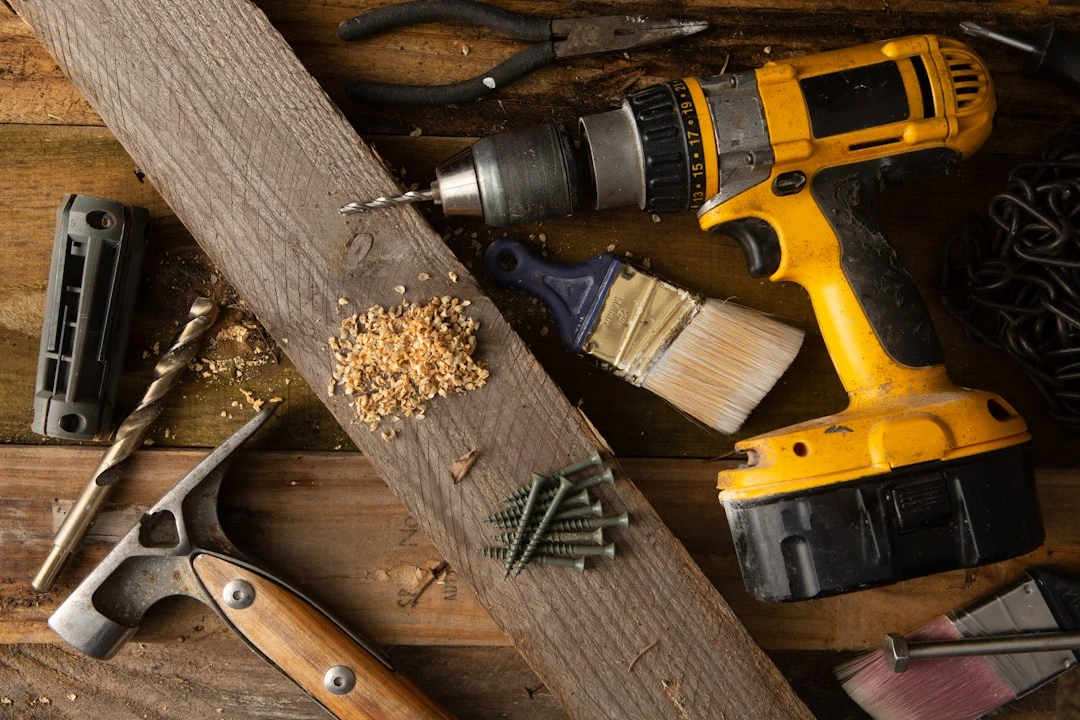Autumn Home Preparations: Getting Your Home Ready for Fall and Winter

In Estonia's climate, thorough autumn preparation is essential for homeowners, landlords, and property managers. Timely home maintenance helps save energy, extend the life of the building, and ensure a safe and comfortable living environment during the cold months. Kinnisvara24 has compiled a comprehensive guide to help you plan and carry out the necessary work during the autumn season.
1. Improving energy efficiency
Autumn is a good time to check your home insulation and perform necessary maintenance work. These activities help increase energy efficiency and ensure a comfortable living environment for the colder period.
Windows and doors
Check the seals of windows and doors, and replace them if necessary. Worn seals are one of the main causes of heat loss during the winter period.
Consider replacing old windows with more energy-efficient ones – such an investment can help reduce heating costs and improve living comfort. In the long term, this solution can pay for itself both financially and through increased property value.
Install additional insulation materials on window frames. A simple solution is special insulating paper or tape, which effectively helps reduce cold air infiltration.
Heating system maintenance
Schedule a thorough inspection and maintenance of your heating system before the heating season begins. Clogged or inefficient systems consume more energy and can pose a safety risk.
Heating system maintenance helps keep costs under control and extends the life of the equipment. A well-maintained system ensures that your home stays comfortably warm during winter and operates efficiently.
Bleed air from radiators to improve heat transfer efficiency. Air accumulated in radiators prevents hot water circulation, reducing heating effectiveness.
Clean or replace the filters in your heating system. Clean filters ensure better air circulation and lower energy consumption.
Insulation
Check the insulation in the attic and walls. Poor insulation in the attic can cause significant heat loss.
Add extra insulation to areas where thermal bridges form. Typical problem areas are the corners of exterior walls, areas around windows and doors, and places where pipes pass through exterior walls.
Pay attention to insulating pipes to prevent freezing in winter cold. Insulate especially carefully the water pipes located on exterior walls.
If necessary, consider improving sound insulation, which also helps retain heat. Double benefit – less noise and a warmer home!
2. Exterior appearance and structural maintenance
Many homeowners check roof coverings and gutter systems in autumn to prevent damage that could occur in winter. This helps avoid unpleasant surprises and extends the life of the building.
Roof and gutters
Clean gutters and downspouts of leaves and debris. Clogged gutters can cause water to accumulate, which expands when frozen and damages gutters and roof structures.
Check the roof covering and roof tiles – repair or replace them if necessary. Even small cracks or missing roof tiles can lead to extensive damage if water enters them and freezes.
Check roof windows and chimneys and seal any cracks. The connection points between the chimney and roof are often problem areas where water can enter.
Facade and foundation
Check the condition of the exterior walls of the building, repair cracks and paint damage. Small cracks can expand rapidly during freeze-thaw cycles.
Make sure the ground around the foundation is sloped away from the house so water doesn't accumulate. The ideal slope is approximately 15 cm per 3 meters away from the house.
Remove plants that are growing too close to the foundation. Plants can promote moisture accumulation and their roots can damage the foundation.
Outdoor area
Trim back tree branches that extend over the house. With autumn storms and snow loads, breaking branches can damage the roof or gutters.
Clean and store garden furniture, grills, and other outdoor items. Proper storage significantly extends their lifespan.
Empty and disconnect watering hoses, close external water taps. Frozen water expands pipes and can cause them to burst.
Autumn is also an ideal time for fruit tree maintenance – according to Estonian Gardening Association data, demand for shrub and fruit tree maintenance services increases by 35% in autumn. Properly maintained fruit trees are more resistant to diseases and will produce a better harvest the following year.
3. Ensuring safety
According to the Police and Border Guard Board data, the sale of security locks and motion sensors increases during the autumn season. This shows that people are actively thinking about their home security when days become shorter and darker.
Electrical systems
Schedule an inspection of your electrical system, especially if the house is older. Outdated wiring or an overloaded system can pose a fire hazard, especially if additional electrical appliances are used for heating in winter.
Check the condition of smoke and carbon monoxide detectors, replace batteries. This simple action can save lives, especially during the heating season when the risk of carbon monoxide poisoning increases.
In autumn, it's wise to also think about possible power outages and ensure you have working backup solutions at home – whether it's power banks, a generator, or other alternative energy sources.
Fire safety
Clean chimneys and ducts – this is a mandatory activity before the heating season! Ordering chimney sweep services in advance saves you from long waiting lists that typically form at the beginning of the heating season.
Check the safety of heating and fireplace systems. Make sure fireplaces have the necessary protective grilles and that there are no easily flammable materials around heating devices.
Make sure all evacuation routes are clear and fire extinguishers are in working order. Family members should know how to behave in case of fire and where the exits are located.
Security systems
Check exterior locks and security devices. Worn or outdated locks may be more easily accessible to malicious individuals.
Make sure the outdoor area lighting works properly. Well-lit outdoor areas are one of the simplest and most effective security elements.
Consider adding additional security elements such as motion sensors or surveillance cameras. Modern smart security systems have become more affordable and easier to install than ever before.
4. Rental property preparation
Many landlords use checklists during the autumn season to ensure rental properties are well-maintained and meet current requirements. This reflects the spread of a more professional approach to rental property maintenance.
Inspections and improvements
Conduct a thorough inspection of all rooms, paying special attention to moisture and mold, which can worsen in colder weather.
Repair leaking faucets, broken switches, and other minor problems. Small problems can quickly become larger ones, especially if the tenant doesn't know how to handle them.
Check the efficiency of the heating system and make sure the tenant knows how to use it. Explain to the tenant how to adjust thermostats and how to bleed the system if necessary.
Documentation
Update rental property photos if you have made significant improvements. Quality photos help find new tenants in the future and document the condition of the property.
Check that the rental agreement clearly defines responsibility for winter maintenance. Who is responsible for snow removal? Who should report problems with the heating system?
Create a list of all repair work that has been done or is planned. This helps the tenant understand that the building is regularly maintained and also gives you an overview of your investments made.
Tenant guidance
Give the tenant clear instructions on how to use the heating system and ventilation. Written instructions are especially useful because they can be reviewed again if needed.
Share advice on how to avoid moisture problems during the winter period. Regular ventilation, optimal temperature, and humidity control are the main recommendations.
If you plan major work, notify the tenant in advance. Respect for the tenant's time and comfort helps create a positive relationship.
5. Recommended tools and resources
In autumn 2025, property managers use digital applications to plan maintenance work. This trend shows that technology is becoming increasingly important in home maintenance.
Necessary tools
A ladder for cleaning gutters – invest in a quality and stable ladder that suits the height of your house.
Hand tools for minor repairs – a basic set could include screwdrivers, pliers, a hammer, a measuring tape, and a power drill.
A leaf blower and rake for cleaning the outdoor area – the choice depends on the size of your garden and the number of trees.
Sealant materials for windows and doors – silicone sealant, sealing tape, and insulation foam are the main materials needed by almost all households.

Digital tools
A digital maintenance calendar where you can mark completed and future work. A digital calendar helps you remember regular maintenance tasks and track their completion.
Energy consumption tracking applications that allow you to monitor heating costs and notice unusual patterns.
Long-term weather service forecasts that help plan outdoor work and prepare for extreme weather conditions.
Professional assistance
Chimney sweep contacts – don't forget that calling a chimney sweep is not only safe, but also a legally required activity.
Contacts of construction experts for solving more complex problems – keep the contacts of a trusted electrician, plumber, and builder who can respond quickly in emergency situations.
Sustainable solutions in autumn maintenance
Improving energy efficiency is beneficial not only to your wallet, but also to the environment. Today, there are increasingly more opportunities to make environmentally friendly choices in home maintenance as well.
Energy-saving technologies
Consider installing solar panels before winter to prepare for the next year. Although production is lower in winter, late summer and early autumn are good times for installation, as companies often offer end-of-season discounts.
Smart thermostats help optimize heating by adjusting temperature according to your habits and lifestyle. They can reduce heating costs and improve your home's overall energy efficiency.
LED lighting significantly reduces energy consumption, especially during dark periods when lighting is used more. LED lights consume less energy than incandescent bulbs and last longer.
Reuse and sustainability
Use environmentally friendly cleaning products that are safer for both your family and the environment. Simpler products like vinegar, baking soda, and lemon juice are effective for many cleaning tasks.
Compost leaves and other garden waste. Compost is a valuable fertilizer that you can use in your garden next spring.
When insulating, prefer environmentally friendly materials such as cellulose insulation material or sheep's wool, which are renewable resources and reduce your home's ecological footprint.
Financing
Research government subsidies for improving energy efficiency. In 2025, several support programs are available to help cover costs.
If you represent a housing association, check housing association renovation loan opportunities. Joint renovation is often more cost-effective than individual solutions.
Consider that improving energy efficiency increases property value – it's not just an expense, but also an investment in the future.
Autumn maintenance is not just an obligation, but also an opportunity to make your home more comfortable, energy-efficient, and secure. Start preparations today and enjoy a comfortable and warm home during winter, while at the same time reducing your energy costs and environmental impact.




